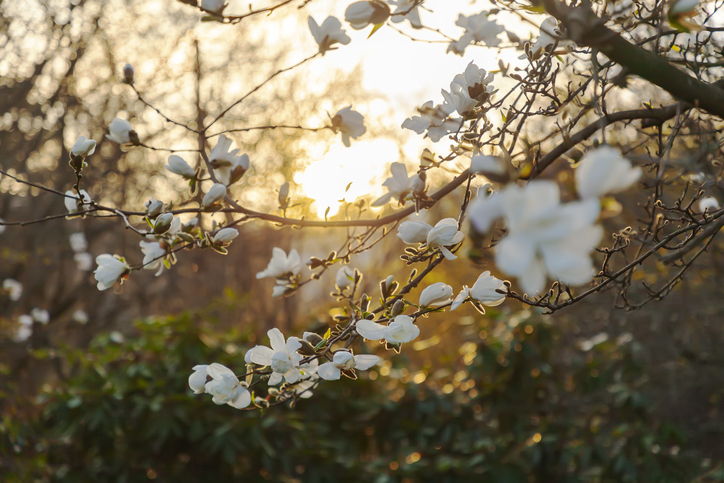What Does a Magnolia Tree Look Like?
There are many different species of magnolia trees, but in Denver, saucer magnolias grow best. They produce large, aromatic flowers that are can be white or pink. The leaves are long, smooth and shiny, and they grow up to six inches in length. The flowers emerge in early spring or summer, but it’s not uncommon for new growths to bloom again in the fall.
When autumn arrives, magnolia leaves turn reddish brown and fall to the ground, leaving a magnificent branch structure that’s interwoven and thick. Birds especially love to use them for nesting.
Where Does it Grow?
Magnolia trees grow all across the country, and can thrive in just about any climate. In Denver, the most common species is the saucer magnolia, since it can withstand harsh winters and brutal wind. In fact, the saucer magnolia grows across Colorado’s Front Range, since it’s so hardy and low maintenance.
How Big Does it Get?
Magnolias can be pruned to grow as shrubs or trees, and they can live up to 80 years, if well-maintained. Shrubs can be pruned to be around 15 feet tall, while trees can grow up to an impressive 80 feet in height, in the native locations. They’re especially nice for landscaping purposes, since you can prune your magnolia to fit your space perfectly, and the sweet-smelling blooms make your yard look elegant and beautiful.
What Does it Need to Grow?
Magnolias are very hardy trees and they adapt well to their surroundings. They can tolerate most climates and are extremely resistant to frost and wind damage. If you want to prune your magnolia, do so after it’s done blooming, and only fertilize if your tree has yellow leaves or looks unhealthy.
What Type of Soil Does it Need?
Magnolias can thrive in most soils, but they prefer well-drained soil that’s rich in organic matter. They can also tolerate soil that’s composed of clay, loam or sand.
How Much Light Do They Need?
Magnolias prefer full sun, but varieties like the saucer magnolia can thrive in partial shade as well. If your magnolia grows in an environment that experiences frost, it’s a good idea to plant your tree in a protected location like near your home or other warm structure. If a late frost is expected, and your tree isn’t very large, it’s recommended that you cover the leaves. Otherwise, it may not bloom in the spring.
Are They Native to Colorado?
Magnolia trees are native to North America, but only certain species can tolerate the dry, harsh winds and frosty elements of the Front Range. Saucer magnolias are especially resilient, and they can grow to be deciduous shrubs or small, round trees. Eight species are native to North America, including the Southern, starr, loebner, sweetbay magnolia and cucumber tree.
Interesting Facts
- The two oldest trees on the White House grounds were planted between 1829 and 1837. These Southern magnolia trees were planted by Andrew Jackson in memory of his late wife.
- Magnolia tree fossils date back over 100 million years, and they’re believed to be the earliest known flowering plant.
- Magnolia trees rely on beetles for pollination, since the trees actually date back earlier than bees.
If you’d like to learn more about magnolia trees, contact us at American Arbor Care today. We’re happy to teach you all about magnolia trees and which ones will grow best on your property in Denver.

